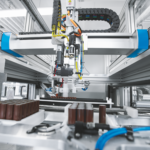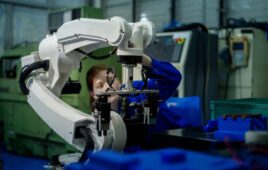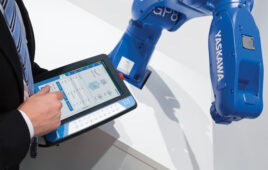We recently asked several industry experts about trends they’re seeing in engineering training, software tools, and support. Here’s what those experts had to say.
Meet the experts
Nathan Andaya | Director Techline SBU • LINAK U.S.
Boaz Eidelberg | CTO • SAAR Inc.
James Gallant | Director of operations • ISL Products International Ltd.
Chris Gottlieb | Director, Drives, and Control • Kollmorgen
Chris Gumas | Director of marketing • Ruland Manufacturing
Carsten Horn | Applications Engineering Manager • maxon
Clemens Kaestner | European training manager • Microchip Technology
Pamela Kan | President and owner • Bishop-Wisecarver Corp.
Robert Luchars | VP of business development • ECM PCB Stator Technology
John Melanson | Vice President, Application Engineering • SKF
Tony Oran | Vice President of Sales North America • Festo Didactic
David Paloian | Academic program manager • Microchip Technology
David Sandys | Senior Director, Technical Marketing • Digi-Key Electronics
Yoshitaka Umeno | Global Market Manager – Medical and Robotics • Kollmorgen Corp.
Kelly Walden | VP of manufacturing • Bishop-Wisecarver Corp.
Andy Zaske | V.P. of sales and marketing • Tolomatic
Stroll through any major tradeshow floor and you’ll overhear countless conversations about training the engineers of the future. It’s been that way for a while. But the conversations about preparing young students to replace an aging engineering workforce have reached a fever pitch. To even stay relevant, let alone competitive, companies must invest as much into their training and support as they do in their products and services. To learn more about how that’s being done at the highest level, we asked several industry experts about the initiatives they’re taking to remain on the cutting edge.
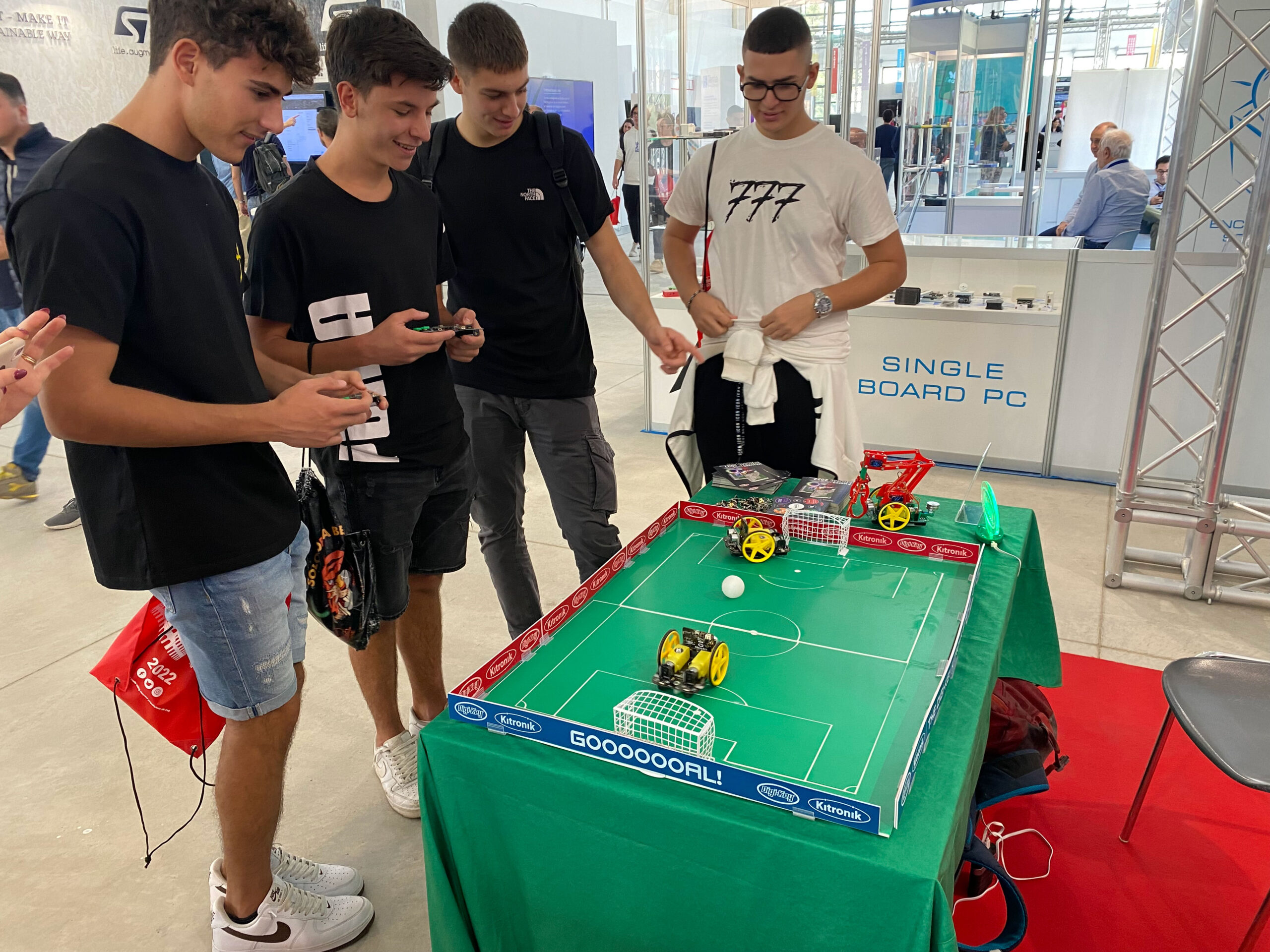
Shown here are Maker Faire attendees investigating the Kitronik Robot Soccer Demo. Image courtesy of Digi-Key
Describe your involvement in training and eLearning.
Kan: We just built a state-of-the-art training center at our factory in California that can comfortably accommodate up to 80 people at a time. See our home page, www.bwc.com, to sign up for factory training, lunch and learns, and one-on-one video training.
Oran: Festo Didactic offers hands-on training systems primarily for two-year degree program automation labs and provides mechatronic training to manufacturers, processors, and OEMs. Of course, Festo provides training on its own products, but that training is separate from Festo Didactic. Festo Didactic is dedicated to raising knowledge and skills in mechatronics. Most frequently, we increase the skill levels of manufacturing personnel on PLCs, fluid power, electric motion, and industrial maintenance.
We now offer a robust digital learning platform. Festo LX (Festo Learning Experience) offers traditional eLearning and eTheory courses.
How have your training approaches changed since COVID?
Gumas: During COVID, we built the Ruland Certificate Course that anyone can use. The challenge was creating a program that could satisfy everyone in a time-efficient fashion. Before COVID, all our training was in-person. The Ruland Certificate Course reflects the in-person training with a mix of videos, charts/diagrams, and text. We still feel in-person is the best way to administer training due to the questions we get, but as a mid-size manufacturer, we do not have the resources to do every training in-person. It is still by invitation only — anyone can email us if they’re interested — but we will release it to everyone over the next few years as we develop a better understanding of how users interact with it.
Gallant: These design notes are dc motor/gearmotor focused but catered to the engineering community to help educate engineers at all levels. Since this has always been a platform on our website, there really was no change during COVID. We were able to educate engineers without delay.
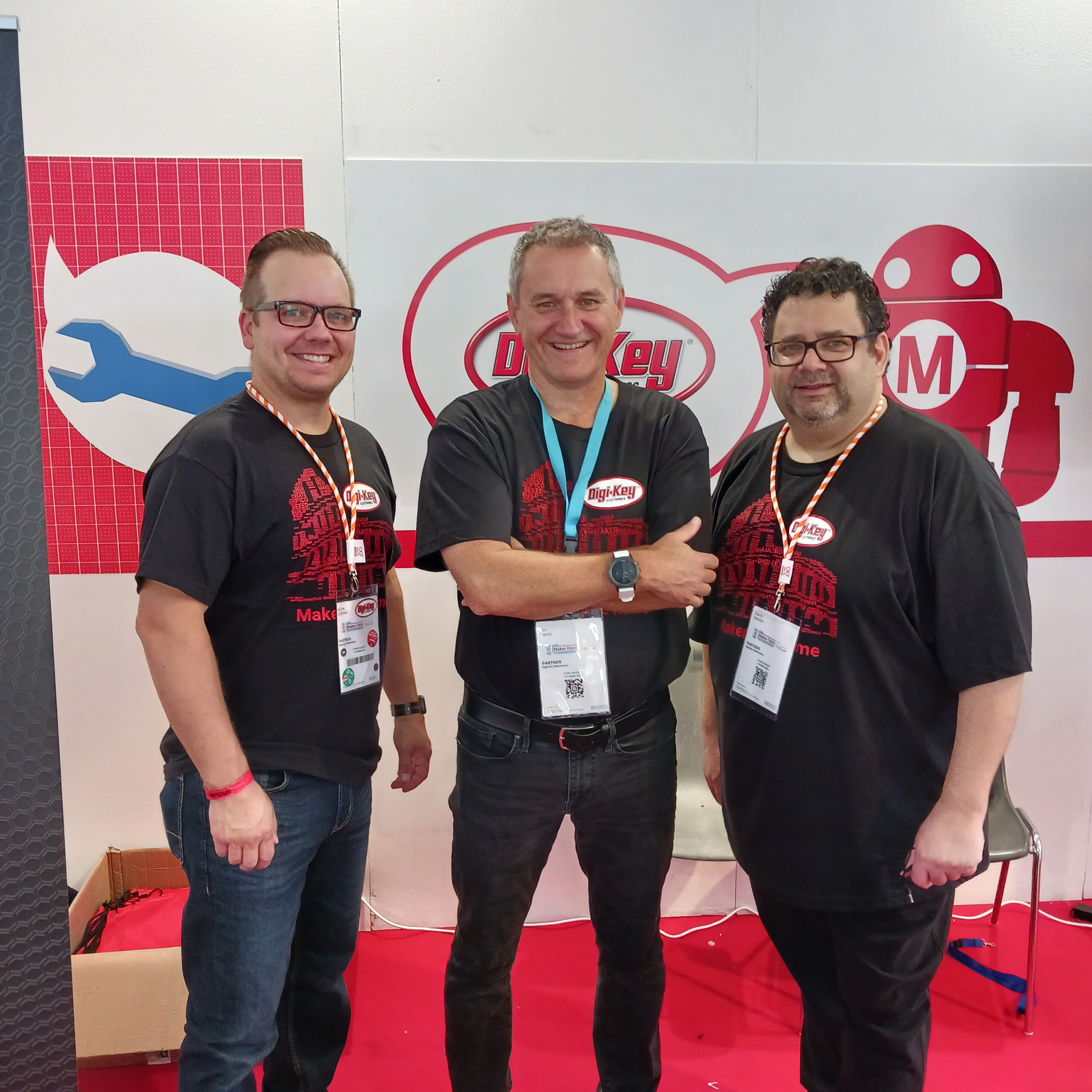
With technologies becoming more affordable and user-friendly, making is now more accessible than it has ever been and poised for enormous growth around the world. Shown here are the Digi-Key team that represented the company at the recent Maker Faire in Rome.
Gottlieb: Kollmorgen has returned to in-person training alongside our virtual trainings. Both options have been popular. Many distributors, sales reps, and OEM engineers appreciate being able to ask a question of the engineering team in the moment, in person, while looking at the servo system. However, virtual satisfies the basic needs of those who don’t have the opportunity cost to travel as everyone has more work than they can handle. So, we have been happy with offering both methodologies of classes. Most of our internal Altra Business System and behavioral trainings are virtual.
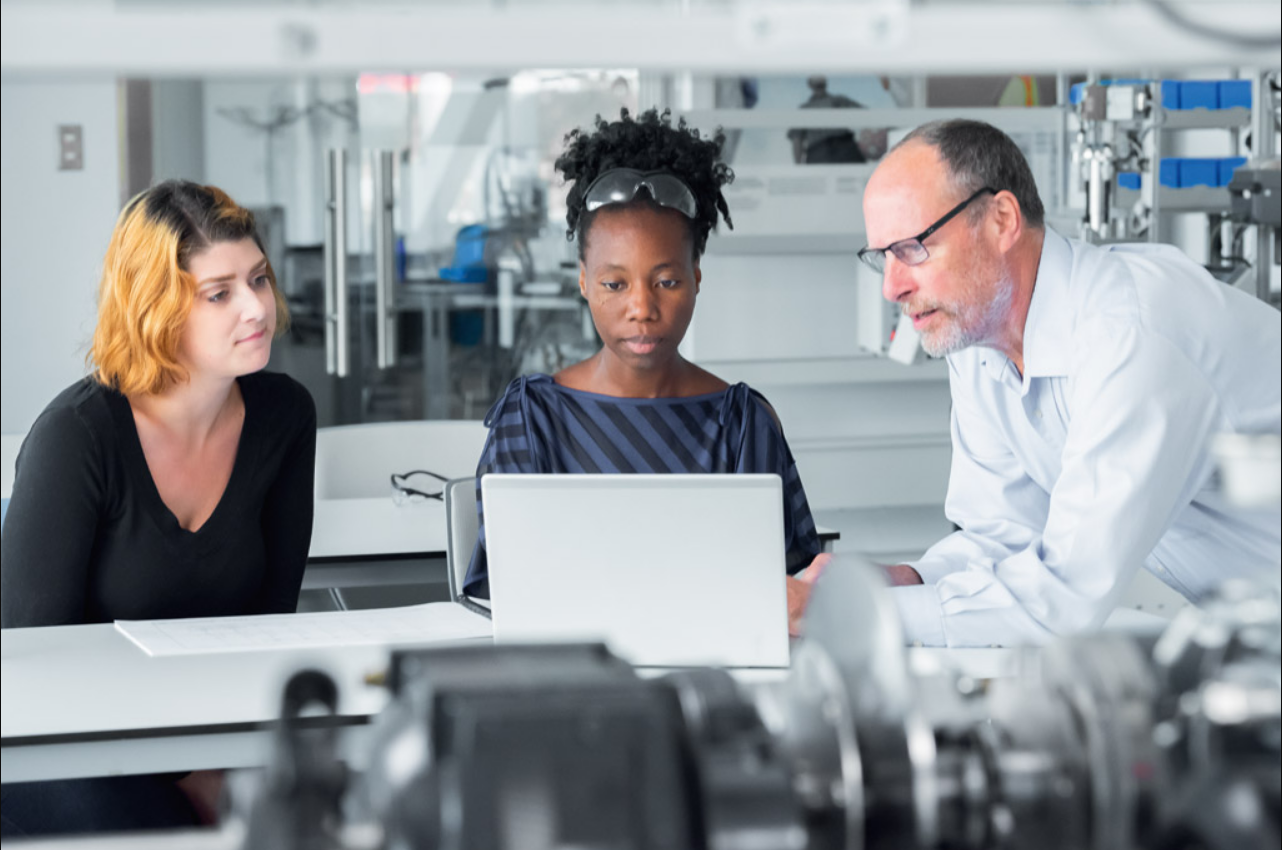
Most apprenticeship training can be structured to take place on the employer’s shop floor — including learning dimensional metrology and quality as shown here. Image courtesy Festo
Kaestner: Microchip hosted its annual in-person technical conference for over two decades in various locations around the globe. That conference gave system design engineers very high-level extensive product information, hands-on training, and the opportunity to network with industry experts from within Microchip and our Design Partner Network.
COVID had a significant impact on this. We had to cancel the conference in 2020 and started to convert the material into online lessons shared on a learning platform for our clients. Starting with 25 courses in December 2020, we now cover more than 110 topics on Microchip University.
Eidelberg: We are planning a series of short online, motivational AI/ML courses for young mechatronics engineers. Training will focus on how to work as an interdisciplinary team member in an autonomous product development project. Our objective is to reach some of our students, who may find interest in our specific exoskeleton activities, so they may join us for an exciting experience of next generation, RL product development.

Today’s apprenticeships feature classroom, lab, and on-the-job training. Apprenticeships prepare the next generation of workers for a high-tech, challenging, and well-paying career.
Most apprenticeship training can be structured to take place on the employer’s shop floor — including learning dimensional metrology and quality as shown here. Image courtesy of Festo.
Paloian: We also have an Academic Program that supports the training and use of Microchip tools and technologies in college-level engineering programs. With COVID, we saw a move to more low-cost student-owned tools to support remote learning. There were many benefits to this approach (flexible scheduling of lab assignments and access to the tools for other projects and general tinkering), which enabled students to delve deeper into the technology than is usually afforded by more centralized shared labs. Many schools plan to continue some aspects of this approach post-COVID.
Luchars: ECM PCB Stator technology will offer our PrintStator electric motor design platform, PrintStator, to the public as a SaaS product in 2023. In the interim, ECM is undergoing a beta test of PrintStator with a select group of partners. As part of that process, we’re training and soliciting feedback from designers and engineers of nine companies. A core component of the beta test is extending the resources of ECM’s team to train partners on PrintStator’s full electric motor design and optimization capabilities.
Oran: Festo Didactic sees greater emphasis on digital learning, which is a combination of traditional eLearning online courses along with simulations, augmented reality (AR), and virtual reality (VR). Foundational to this trend is the fact that the first digital generation is entering the workforce. They receive most of their information from their phones, tablets, and laptops. Digital learning feels natural to them.
Walden: We maintain valuable educational content through our YouTube channel, including education sessions and application stories. We host webinar events to educate audiences on the application and use of our products and new technologies/offerings. We are developing additional content as part of Bishop-Wisecarver University (BWU) for targeted education which can be delivered virtually or on-site in our dedicated educational facilities.
Umeno: As customers have increased their requests for face-to-face visits throughout the last year, Kollmorgen has been able to provide flexibility and options to our customers with our strong offering of online training tools. The improved online tools with a wide range of videos, webinars, and blogs available in different languages allow us to provide an excellent service to our global customer base.
Melanson: Training — when done at the correct time, to the correct audience, and with the correct content — can be very powerful. Historically, training has been done in the classroom setting. What is being discovered is that people are learning in different ways: shorter time frames, targeted content — and through video and other rich media means.
What is your advice for end users and OEMs experiencing the skills gap?
Oran: The skills gap — the difference between the knowledge and skills of workers and the knowledge and skills needed in today’s machine building, manufacturing, and processing industries — is too wide. It’s mathematically impossible for two-year institutions to graduate enough people. The public simply does not understand that careers in manufacturing can be rewarding both financially and meaningfully. This leads to fewer people entering the manufacturing and processing industries.
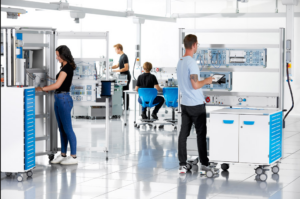
Festo training and e-learning Apprentices working on Didactic lab modules. Image courtesy of Festo.
What are your thoughts on industrial apprenticeships?
Oran: Apprenticeship programs are an important way to develop your workforce, close the skills gap, and find productivity gain. Apprenticeships are remarkable for what they accomplish and the financial support that is available.
I urge company executives to think of apprenticeships as a long-term conversation with prospective employees. On non-classroom days, apprentices are exposed to company culture and industry values and, while in the classroom, apprentices learn valuable skills.
Tell us about any selector, sizing, or sales software you use or offer to customers.
Horn: The advantage for customers to outsource the motion control system (partly or completely) is to reduce risk, costs, and time. If you outsource the design of such a system with maxon, you get access to 60 years of expertise and know-how in motion control technology.
Gottlieb: Motioneering is a world-class sizing software so beloved that I knew customers using other motion equipment utilizing Motioneering to determine current needs and then trying to cross-reference that value to competitors’ products. We have an intuitive tool that gives engineers what they need to know fast — shortening design time.
Horn: As robotics and AI become increasingly popular and widely used, the number of actuator systems needed also rises. The number of requirements increases with the number of applications, and as resources are tight, design and manufacturing services play a key role in the success of a customer’s end product.
Walden: We offer online product selection and configuration tools, allowing engineers to design exactly what they need and configure a specific part number for easy ordering. CAD models are generated during the configuration process and can be downloaded by the machine builder for easy integration into their equipment design.
Horn: For custom development, you must offer more services to be successful. This includes verification and validation services for the design, risk assessments, design history files, production feasibility studies, production history files, supply chain analysis, and many more.
Describe any programs you support to educate young engineers.
Zaske: Tolomatic quickly pivoted during the pandemic to offer a lot of on-line training opportunities for our distribution partners as well as industry engineering contacts. We coined the phrase “ToloTalks” to help identify these sessions. As time has worn on we continue to adjust our approach to include videos, shorter segments (sometimes a couple minutes in length), as well as going back to more in-person training sessions.
Sandys: The thirst for knowledge is greater than ever. After two years of interruptions due to the pandemic, it was an incredible experience to attend Maker Faire in Rome last fall, where attendance was stronger than anticipated and makers were back in full force to learn, grow, innovate, and unite as a community. The caliber of students who attended and the innovations they’re working on is mind-boggling.
Andaya: We promote and give electric linear actuators to student programs. For example, we support the 1/4 scale tractor competition led by the American Society of Agricultural and Biological Engineers or ASABE for engineering students. For this competition, we sponsor and provide actuators to student groups. We also attend to assist engineering students who have questions about the actuators.
Sandys: Arduino is all grown up. Arduino has really brought their three-pronged strategy to life. Arduino has always been strong in both the maker and education spaces, but their recent securement of $32 million in funding will ramp up sales of their enterprise-based solutions, called Arduino Pro.
Almost every maker supplier including Adafruit, SparkFun, Pimoroni, Kitronik, and SEEED Studios has contributed to the ecosystem, making it robust and widely supported. With the recent addition of the Raspberry Pi Pico W boards, makers now have access to wireless capability in a small form factor. At Maker Faire Rome, demonstrating everything from infinity mirrors to lightsabers, we helped attendees understand the flexibility of this exciting product portfolio.
Resources to help makers are plentiful. Anyone can go to GitHub or Instructables and find files for almost anything. Digi-Key’s Maker.io provides information, projects, ideas, tools, and more to help and inspire makers. There are so many great resources out there to help people take projects step-by-step and start their maker process. Digi-Key and Make: have also released the new Boards Guide and companion Digi-Key AR augmented reality app, available in both the Apple App Store for iOS devices and the Google Play store for Android-based mobile devices.
You may also like:
Filed Under: Trends

